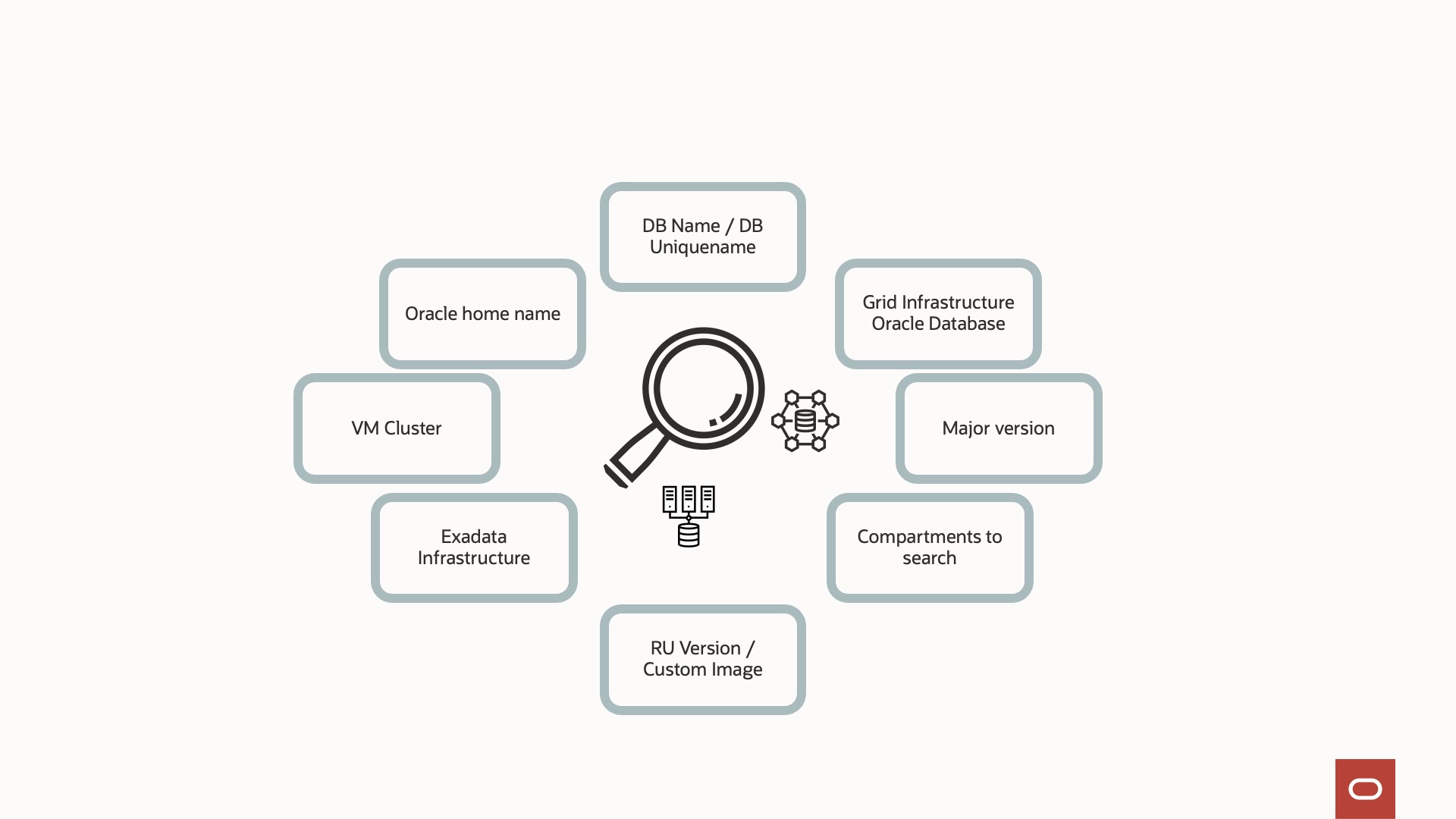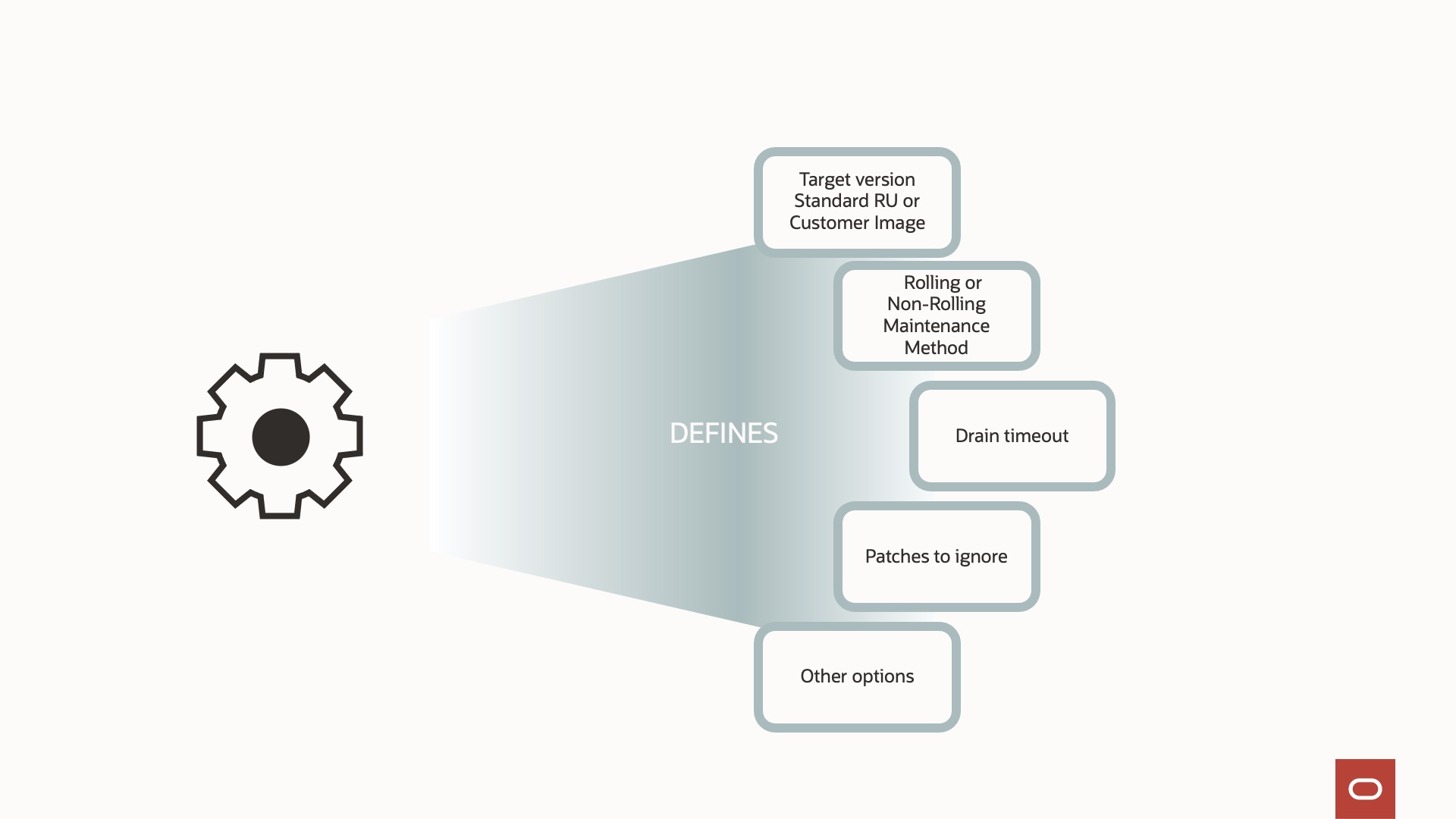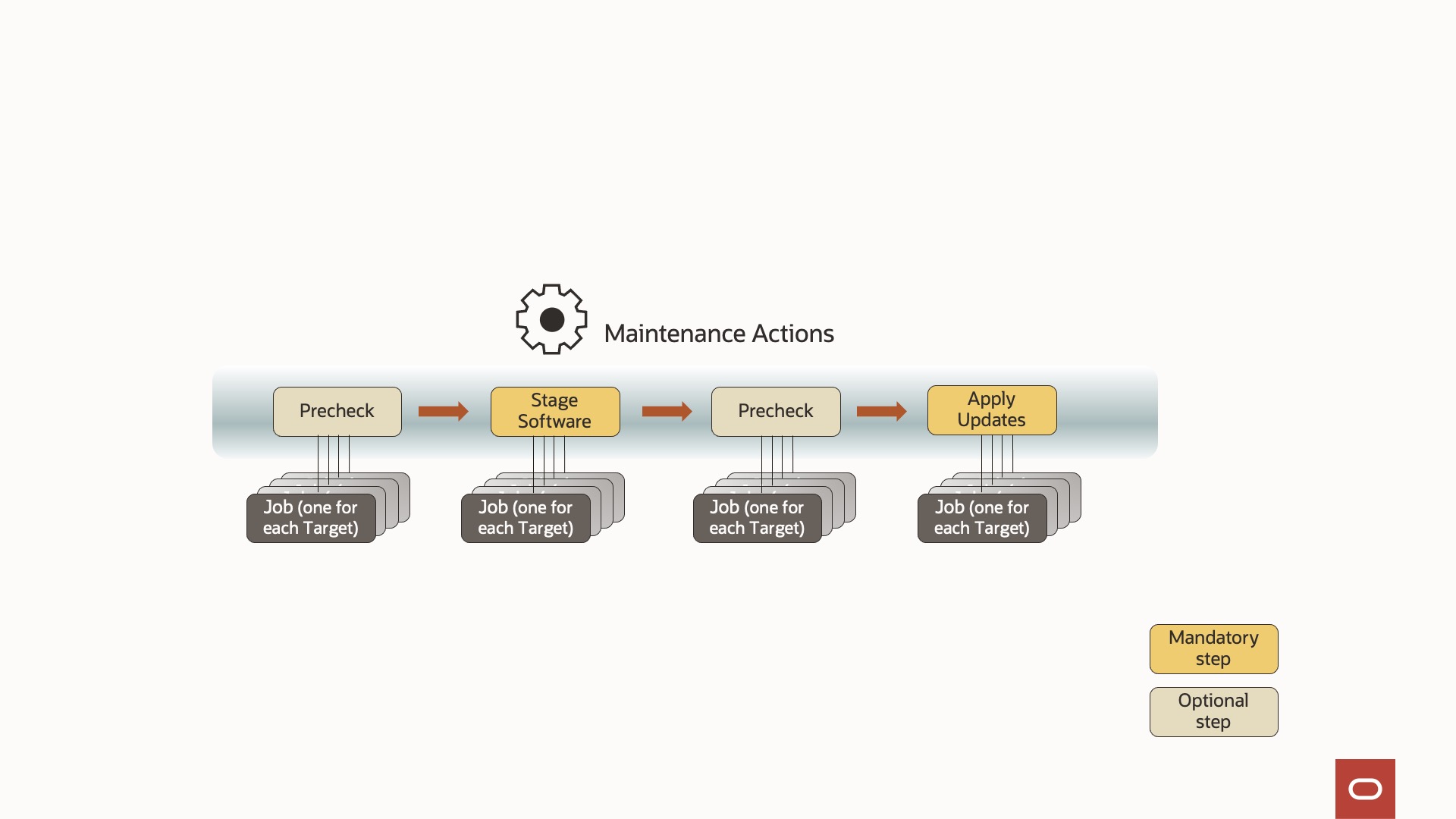My previous blog post officially announced the availability of the Oracle Cloud Infrastructure (OCI) Exadata Fleet Update service for ExaDB-D and ExaDB-C@C customers.
In this post, we will go a bit deeper into the concepts of Exadata Fleet Update and show how you can put Exadata Fleet Update into action.
How does Exadata Fleet Update work?
Just as Fleet Patching and Provisioning the on-premises product, Exadata Fleet Update patches out-of-place, adding a new patched Oracle Home. Patching out-of-place makes patching in a rolling fashion possible and offers lots of flexibility.
Conceptually, Exadata Fleet Update is a very straightforward two-step process;
- Define a collection based on search criteria,
- Define the maintenance cycle, after which you can start the out-of-place patching process
Creating the Collection
A collection represents the targets to be acted upon as one entity.
Creating a collection is easy; specify the search criteria, such as the installed version, compartment, cluster name, and other criteria.

These search criteria result in several targets. By default, all the targets that satisfy the search criteria are selected; if some targets don’t need to be added to the collection, then they can be unselected, allowing administrators to manage a massive number of targets with a minimum of clicks in the OCI Console.
When all the required targets are assigned to the collection, the creation of the collection can be finalized.
Please have a look at following video that will show you how to create a collection.
Maintenance Cycle creation
A maintenance cycle defines the what and the how.
A maintenance cycle can be created once the required targets are added to the collection.
It defines the target version using Oracle-provided or customized database software images.
If databases are sharing the same Oracle Home, this will be honored. Optionally, you can reuse pre-existing Oracle Home if they are on the same version.
A maintenance cycle also defines the how, the maintenance method to use, and the drain timeout.
The maintenance method defines the number of nodes that are updated together.
A wide choice of maintenance methods is available, depending on the business needs and the target type.
Grid Infrastructure (GI) and Databases can be patched:
- Rolling, meaning node-by-node patching
- 50/50, 50% of the nodes in the cluster will be patched in one batch at a time; you can choose to pause between batches.
- Smart batch, batches of the nodes in the cluster to be updated together depending on the service configuration
As an additional maintenance method, databases can also be patched in a non-rolling fashion; all database instances in the cluster are then patched in parallel; note that this will result in complete downtime.
You can alsospecify to force rolling patching and not to raise errors when bug fixes for issues are present in the source but not in the target version.
As you can see you have a lot of options.

Have a look at the video below to see how this really works.
Once the maintenance cycle is defined, the actual patching can start.
The maintenance cycle process consists of several phases, as seen in the image hereunder.
All those phases can be scheduled.

Most of these steps will create a job (with associated work requests) per target in the collection with corresponding logs. This makes troubleshooting very easy.
It is not mandatory but highly recommended to perform a precheck before staging the software and before the application of the patch—this way, potential blocking issues can be handled upfront.
In the final video hereunder you will see how an Oracle Database collection is updated to the version with the options we defined in the maintenance cycle.
Voilà, your Exadata Database Service DB’s have been patched to the desired version; that was easy!
Further Info
Blog :
Announcing Exadata Fleet Update
Videos :
Exadata Fleet Update Overview video
Creating a Database Collection with Exadata Fleet Update
Creating a Database Maintenance Cycle with Exadata Fleet Update
Updating a collection of Databases using Exadata Fleet Update
Oracle Help Center : https://docs.oracle.com/en/engineered-systems/exadata-cloud-service/edsfu/index.html
OCI Documentation Portal : https://docs.oracle.com/en-us/iaas/edsfu/index.html
API Documentation: https://docs.oracle.com/en-us/iaas/api/#/en/edsfu/20220528/
